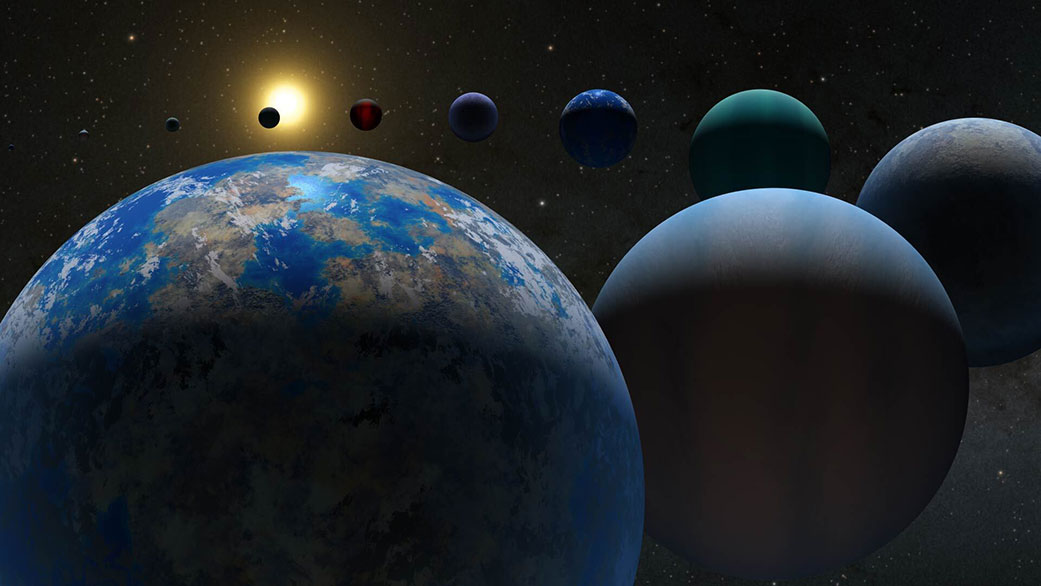The exploration of habitability metrics is crucial in the field of astrobiology, particularly as the search for exoplanets intensifies. The current count of confirmed exoplanets stands at approximately 5,766 across 4,310 systems, a number that continues to grow as new discoveries are made. As telescopes and technology advance, the focus of research is shifting from simply discovering exoplanets to characterizing them and assessing their potential for supporting life.
The Need for a New Habitability Metric
Traditionally, habitability has been measured by the presence of Earth-like conditions; this perspective has been increasingly questioned. Recent research emphasizes the significance of considering the evolutionary history of Earth to understand the varying biosignatures throughout its timeline. A comprehensive understanding of Earth's past environments and conditions provides broader contexts and comparison points for identifying potentially habitable exoplanets, enhancing our search beyond the constraints of the Earth-centric viewpoint.
Research Highlights
A pivotal study led by Kenneth Goodis Gordon of the University of Central Florida's Planetary Sciences Group explored these concepts. His team, collaborating with several prestigious institutions—including the SETI Institute, NASA's Virtual Planetary Laboratory at the University of Washington, and others—has presented findings that could significantly change our approach in searching for habitable worlds. Their research, set for publication in The Astrophysical Journal, outlines the rationale for expanding our understanding of habitability.
“Current metrics often equate habitability solely with Earth-like environments. By considering the diverse conditions under which life has evolved on our own planet, we can develop metrics that identify potentially habitable environments on exoplanets that may not mirror Earth closely.” – Kenneth Goodis Gordon
Potential Habitable Exoplanets
As noted, there are over 200 terrestrial planets identified in the habitable zones of their respective stars. The advancement of telescopes such as the James Webb Space Telescope (JWST) and the Extremely Large Telescope (ELT) will help to scrutinize the atmospheres of these worlds further. Equipped with state-of-the-art spectrometers, these instruments can detect the chemical signatures of gases that may indicate biological processes.
Understanding Planetary Parameters
The search for life requires understanding complex planetary, stellar, and orbital parameters. As reiterated by Goodis Gordon, perhaps the most crucial factor is recognizing that human experiences and human life conditions are only one facet of potential habitability:
- Different stars produce varying light spectra that can influence the atmospheric conditions on orbiting planets.
- Planetary characteristics such as mass, size, and atmosphere composition play a significant role in determining habitability.
- Life as we know it on Earth evolved under specific conditions that may not be replicated elsewhere in the universe.
Engaging with Evolutionary Earth Science
A foundational aspect of the new metrics is the exploration of Earth's past environments, detailing how the planet's conditions have changed over billions of years. By understanding the transitions during epochs such as:
| Geological Epoch | Key Features | Life Impacts |
|---|---|---|
| Archean Eon | Basic life forms develop, predominantly anaerobic microbes. | First evidence of microbial life detected. |
| Paleoproterozoic Era | Great Oxygenation Event transformed atmosphere. | Emergence of complex multicellular life. |
| Phanerozoic Eon | Diversity of life expands rapidly; mass extinction events. | Modern life forms evolve; conditions for human life develop. |
The implications of the research findings point towards identifying biosignatures, atmospheric chemistries, and conditions that can suggest the likelihood of life existing elsewhere—indeed, life on Earth is just one out of many potential pathways.
Integrating Polarimetric Observations
One of the significant breakthroughs in this context is the integration of polarimetry into exoplanet characterization methodologies. Traditional flux observation techniques are limited in scope as they can misinterpret data, particularly when atmospheres feature dense clouds or hazes. As highlighted in the research by Goodis Gordon:
“Polarimetry offers profound innovations for accurately characterizing the properties of a planetary atmosphere and surface. It is sensitive to the scattering mechanisms of light, which opens doors for more precise measurements of atmospheric compositions.”
Potential Applications of Polarimetric Observations
- Polarimetric observations have historically enriched our understanding of planetary atmospheres by revealing details obscured through conventional imaging.
- They can yield directional information about surface materials, cloud distributions, and potentially biologically relevant anisotropic structures.
- The implementation of this technology could drastically improve our ability to differentiate genuine biosignatures against various planetary environments.
The Habitable Worlds Observatory (HWO)
The Habitable Worlds Observatory is designed explicitly for atmospheric investigations. It aims to combine previous exoplanet-hunting missions' experience with new techniques, focusing on biosignature detection in exoplanet atmospheres. Initially drawing insights from missions such as Hubble, Kepler, and the Transiting Exoplanet Survey Satellite (TESS), the observatory will serve as a benchmark for our next steps in exoplanetary exploration.
| Mission | Objectives | Expected Outcomes |
|---|---|---|
| Hubble Space Telescope | General analysis of cosmic phenomena. | Discovery of numerous exoplanets; foundational work for future missions. |
| Kepler Space Telescope | Detection of Earth-like planets in habitable zones. | Identification of thousands of potential targets for detailed study. |
| JWST | Study of distant exoplanet atmospheres. | Enhanced understanding of potential life-supporting conditions. |
| HWO | Focused study on atmospheres, searching for biosignatures. | New metrics for habitability assessment, inclusive of variability and diversity of life conditions. |
Conclusion
As we navigate through the complexity of astrobiology and the multitude of conditions that could harbor life, redefining our metrics for habitability seems essential. Integrating modern tools and strategies that embrace the dynamics of evolution, planetary science, and new observational technology will substantially enhance our objectives in the search for life beyond Earth.
For More Information
References: Universe Today.




